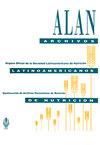哥斯达黎加种植的水稻(Oryza sativa)品种的理化特性和消费者偏好
IF 0.5
4区 医学
Q4 NUTRITION & DIETETICS
引用次数: 0
摘要
简介:大米是哥斯达黎加的主食,占饮食中总卡路里摄入量的近24%。消费者对所消费大米的质量意识越来越强,因此生产者需要在生产的同时关注大米的质量。目的:研究哥斯达黎加5个水稻品种Palmar 18、Basmatico、Chin Chin、INTA-Miravalles和CR- 5272的理化特征和消费者偏好。材料和方法:在原料谷物中进行近似分析,直链淀粉和矿物质含量。使用约翰·布朗r指数(RJB)指数,进行了两个不同的测试(n=120)来评估消费者的偏好测量。第一个感官面板选择最佳烹饪准备,第二个是首选的大米品种。对煮熟的大米品种(76-96℃,38 min)进行仪器颜色测量(L*, C*, hº,DE)。结果:在理化性质方面,inamiravalles的蛋白质含量最高(8.2%),Basmatico和Chin Chin的蛋白质含量最低。4个品种直链淀粉含量较高,INTA-Miravalles直链淀粉含量中等。INTA-Miravalles氮素最高,Palmar 18次之。消费者更喜欢监管机构的烹饪准备。消费者对这些品种的偏好程度由高到低依次为:Basmatico> chinchin =CR5772>Palmar 18=INTA-Miravalles。结论:本研究表明,消费者对煮熟大米的偏好受到理化特性(如蛋白质、AC、矿物质含量和芳香属性)的影响。消费者接受度是开发新品种时要考虑的一个重要因素。蒸煮过程中的水米比对蒸煮大米的感官品质有重要影响。本文章由计算机程序翻译,如有差异,请以英文原文为准。
Physicochemical characterization and consumer preference of rice (Oryza sativa) varieties grown in Costa Rica
Introduction: Rice is a staple food in Costa Rica representing almost 24 % of the total calorie intake in the diet. Consumers have become more quality conscious about the rice consumed, so producers need to focus on the quality of rice along with production. Objective: The aim of this study was to investigate the physicochemical profile and consumer preference of five Costa Rican rice varieties: Palmar 18, Basmatico, Chin Chin, INTA-Miravalles, and CR- 5272. Materials and methods: Proximate analysis, amylose, and mineral content were performed in the raw grain. Two different sessions were performed (n=120 each) to evaluate consumer preference measurements using the John Brown R-Index (RJB) index. The first sensory panel selected the best cooking preparation and the second, the preferred rice variety. Instrumental color measurements (L*, C*, hº, DE) were applied to the cooked rice varieties (76-96ºC for 38 min). Results: Regarding the physicochemical characterization, INTAMiravalles showed the highest protein content (8.2%), while Basmatico and Chin Chin, the lowest. Four varieties presented high amylose content (AC) and INTA-Miravalles reported an intermediate AC. The mineral content varied among varieties. INTA-Miravalles showed the highest N, followed by Palmar 18. The cooking preparation from the regulatory agency was preferred by consumers. The consumers’ preference of the varieties ranked from high to low: Basmatico>Chin Chin=CR5772>Palmar 18=INTA-Miravalles. Conclusions: This study suggests that consumer preference for cooked rice was influenced by physicochemical characteristics such as protein, AC, mineral content, and aromatic attributes. Consumer acceptance is an important factor to consider when new varieties are developed. The water-to-rice ratio during cooking played an important role in cooked rice sensory quality.
求助全文
通过发布文献求助,成功后即可免费获取论文全文。
去求助
来源期刊
CiteScore
0.50
自引率
0.00%
发文量
31
期刊介绍:
Archivos Latinoamericanos de Nutrición (ALAN) is the official publication of the Sociedad Latinoamericana de Nutición (SLAN), for the dissemination of knowledge in the fields of food and nutrition, principally throughout the American Hemisphere. Articles in Spanish, English, Portuguese and French are accepted, both from the Society members and from nonmembers, in the following categories: 1. General articles (critical scientific reviews); 2. Research articles (originals); 3. Papers in applied nutrition (analytical results from intervention programs and discussion of reconmendations of practical application), and 4. Letters to Editor (short comments of general interest or about scientific facts and results previously published in Archives).

 求助内容:
求助内容: 应助结果提醒方式:
应助结果提醒方式:


